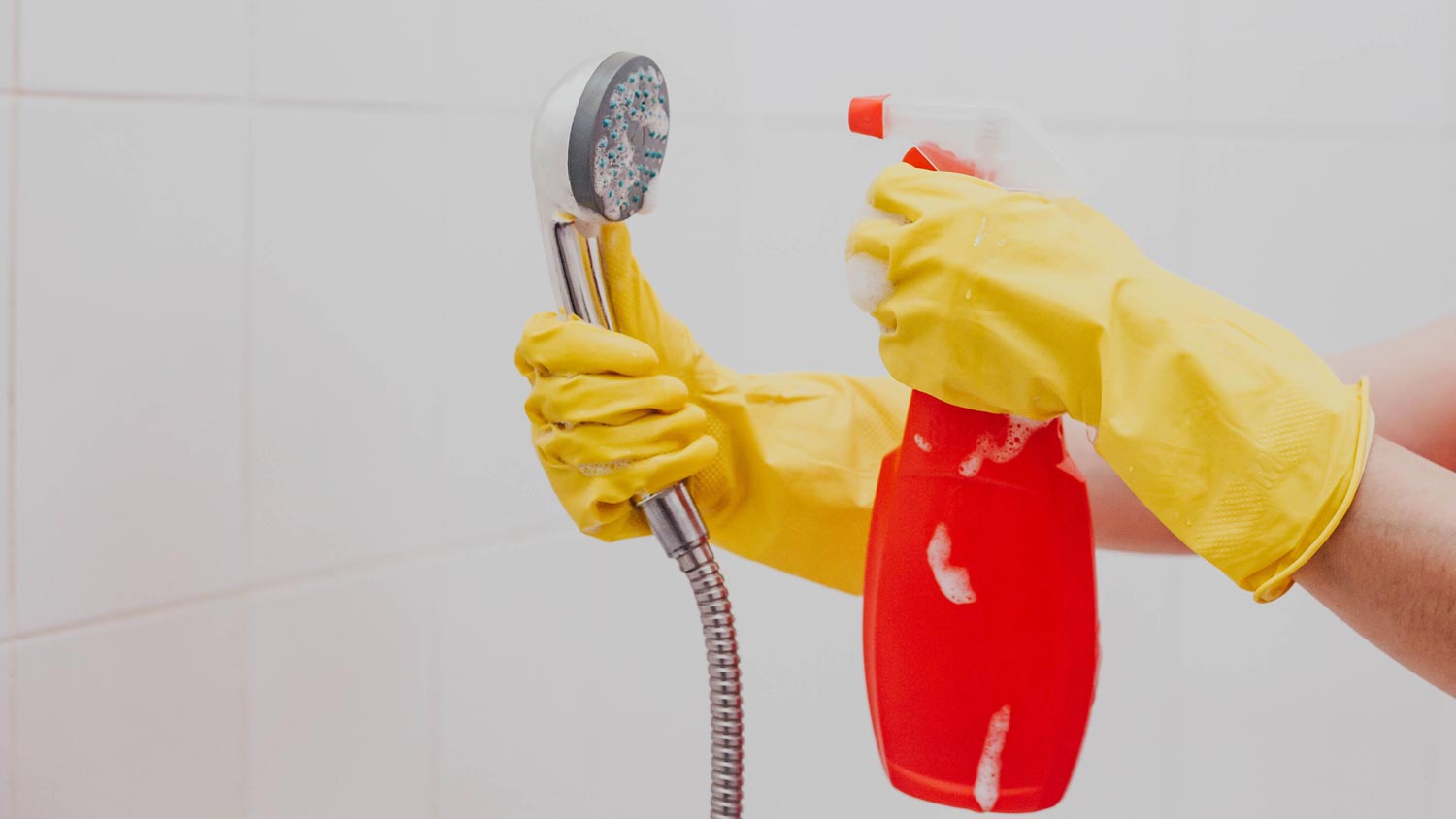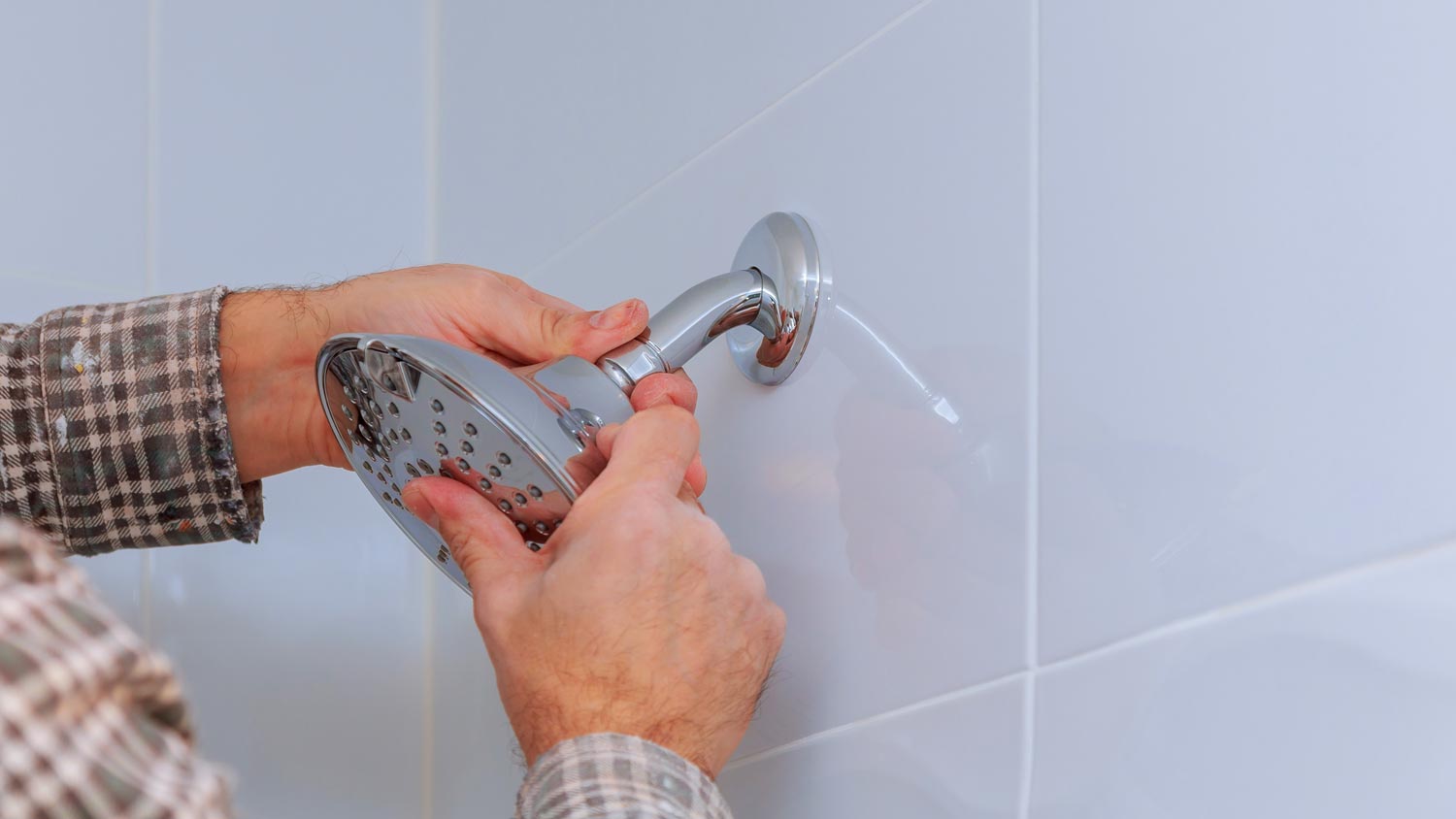How to Increase the Water Pressure in Your Shower
You've got a hot shower; let's make sure there's enough pressure


Many people look forward to taking a nice, hot shower first thing in the morning or at the end of a long day. But it’s not only hot water that makes a shower great—you also need ample water pressure.
If your water pressure is low, it can dampen the experience and even make it unpleasant. From checking the common culprits to fixing any issues, there’s a good chance you can take care of your problem with a DIY fix or with the help of a local plumber.
Why Do I Have to Increase the Water Pressure in My Shower?
You don’t necessarily have to increase the water pressure in your shower. However, low shower water pressure is usually more than an inconvenience—It can indicate problems with your home’s plumbing system. And if the problems include leaks or old piping, it’s better to tackle those issues sooner rather than later to avoid costly repairs due to water damage.
How to Prep for Increasing the Water Pressure in Your Shower
Before you determine the root cause of the low water pressure in your shower, you should evaluate the scope of the problem. There are many reasons your house has low water pressure, so if the pressure problem affects more than just your shower, you should address the house-wide problem first.
You should also consider whether this is a sudden water pressure change or if it has been happening for a short time. If the pressure problems arose suddenly, it could be an issue with the city’s water pipes due to a water main break. It can be helpful to check with the neighbors to see if it’s a shared issue or whether it’s something you need to fix on your property.
To confirm that you’re dealing with low water pressure, you can use a water gauge and make sure that it’s between 40 and 60 PSI. Otherwise, you can place a 1 Liter containerunder the shower head. Turn the water on, and use a stopwatch to see how long it takes for the water to fill the container. You have low water pressure if it takes longer than 6 seconds.
How to Increase the Water Pressure In Your Shower
If you’ve gotten tired of the slow dripping from your shower head, there are many ways to get to the bottom of the problem. It might be a simple fix, or you might be looking at a big plumbing project.
Check the Valves
A good way to troubleshoot the low water pressure is by checking the water valves and ensuring they’re fully open. If your whole house has low water pressure, start with the main water supply valve, and then work your way to your shower’s cold and hot water valves.
While checking on the main water supply valve, look for a water pressure regulator. It looks like a cone. You should turn it clockwise to allow more water to flow.
Clean the Shower Head

Cleaning your shower head is a surefire way to help the water pressure, especially if there's visible sediment build-up on it.
If you can remove the shower head, it’ll be easier to clean. Clean this tricky spot by scrubbing the outside and inside with a toothbrush, and clean the rubber or silicone nozzle. Soak the shower head in vinegar if you have stubborn build-up because it will loosen any sediment or lime scaling.
If you can’t remove your shower head, you can still clean the unit by filling a bag with vinegar. You can tape the bag to the shower head and let it soak for several hours.
Install a High-Pressure Shower Head
Changing your shower head is an easy bathroom upgrade, plus it will likely solve your water pressure problem. If you don’t have any plumbing issues in your home, a high-pressure shower head can provide the solution you need.
However, be aware that higher pressure means more water usage, which could increase the cost of your water bill. If you opt for a luxury shower head, you may need to install a new shower pump for it to function correctly.
Replace the Shower Hose
If your shower hose is old and outdated, then installing a new one might help resolve your water pressure issue. Over time, sediment can settle in the hose, causing clogs and water slow-downs.
You can expect to pay $5 to $15 for a replacement shower hose, and it’s relatively easy to install the new one yourself. Start by disconnecting the current hose from the showerhead, with towels underneath it to catch any water that drips out. Then, disconnect the hose from the shower or wall outlet, and fit the new hose in its place.
Check for Leaks

If leaks are hiding anywhere in your home’s plumbing system, you’re likely to suffer from low water pressure.
In particular, if you live in an older home with plumbing issues, it may have galvanized pipes. These are no longer used in new construction homes because corrosion and rust from galvanized pipes can cause leaks, blockages, and the rust can leach into the water supply. In these instances, it’s best if you replace all of the pipes, not just to avoid leaks but also for your health and wellness.
Check for leaks on the water supply line to the shower, and also check for leaks on the main water supply.
Install a New Shower Pump
If the water pressure problem is not due to leaks or a bad shower head, the best option may be to install a new shower pump. Shower pumps increase the water pressure so you can enjoy powerful streams of water in the shower.
Since replacing your shower pump involves removing electrical wires and water connections, we recommend hiring a professional plumber near you to handle this project.
Install a Water Pressure Booster
If you’re wondering how a water pressure booster works, it’s surprisingly simple. The pump pushes the water through the pipes faster using spinning propellers or oscillating diaphragms. The booster connects to the main water line and can increase your pressure by as much as 70 pounds. Before investing in a water pressure booster, you should rule out all other common plumbing problems to ensure it’s the right solution for your home.
How to Prevent Low Water Pressure in Your Shower

You can take many steps to prevent low water pressure issues in your shower. An essential step is to clean your shower head once a month. It'll not only help with your water pressure, but it’s also healthier for you. A regular cleaning schedule means you’ll never have a build-up of sediment, bacteria, or mold in your shower.
Secondly, you should have a pro complete a plumbing inspection every two years. Scheduling a regular inspection means that your plumber will catch any small problems before they become major issues, and you can be sure that your home is free of leaks.
DIY vs. Hire a Pro
When troubleshooting your shower’s water pressure, it’s best to start with the DIY options that allow you to fix it easily and quickly. However, if you’ve exhausted all the DIY options and still haven’t figured out the root cause, you may be better off hiring a plumber.
Some solutions are best left to a professional, including installing a shower pump or a water pressure booster. Unless you have plumbing experience, it’s best to bring in a pro to get the job done right. Keep in mind that a qualified plumber will typically charge between $45 to $200 per hour or more, depending on the size and scale of the project.





- Gas Plumbers
- Plumbing Repairs
- Sump Pump Installation
- Wood & Pellet Stove Repair
- Shower Repair
- Wood Stove Services
- Emergency Plumbers
- Fire Sprinkler Contractors
- Perc Test Companies
- Toilet Repair & Installation
- Boiler Repair
- Sewer Line Repair
- Faucet Repair
- Main Drain Camera Companies
- Foundation Drain Installation
- French Drains
- Bathtub Replacement
- Subcontractors
- Storm Drain Contractors
- Affordable Plumbing
- Plumbing & Heating Companies
- Bathroom Repair Services
- Sink Installation
- Commercial Plumber
- Barndominium Builders
- Water Line Repair
- Faucet Installation
- Water Line Installation
- Leak Detection
- 9 Tips to Help Increase the Water Pressure in Your House
- How To Get More Pressure From Your Well: Everything You Need To Know
- How to Install a Shower Using Direct-to-Stud Kits
- 6 Tips for Converting Your Bathtub Into a Shower
- How To Increase the Water Pressure From Your Well
- How to Remove a Shower Light Cover Safely and Easily
- 17 Stunning Outdoor Shower Ideas and Designs
- 10 Most Common Plumbing Problems Every Homeowner Should Know










